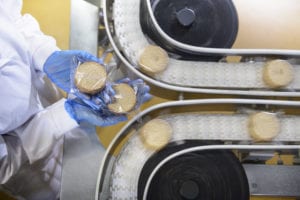Over the years, generations of manufacturing technologies have provided the tools for individual workers to profitably convert raw materials into the affordable, quality goods that consumers wish to purchase. As plant owners seek to improve speed of operations, to lower production costs, and to minimize errors, a dilemma always presents itself: When is the right time to bear the expense of displacing the existing technology install base? The questions around technology decisions become especially acute when competitive and marketplace pressures mount and when new technology breakthroughs occur, such as the recent Industry 4.0 wave of digital solutions.
We at Supertech, an automation systems integrator and certified Schneider Electric Alliance Partner and EcoXpert, are often asked by our clients to evaluate the validity of new technology investment decisions, particularly in the area of Manufacturing Execution System (MES).
Why MES is Critical to Process Operations
When we provide our evaluations, we are cognizant of our clients’ MES investments over time. Since the 1970’s, process manufacturing stakeholders have used MES to achieve efficiency and productivity goals. Over that period, MES has evolved as an important link between planning systems (such as ERP) and control systems (such as sensors, PLCs, and HMIs). Today, most MES’s serve as work-order-driven, work-in-progress tracking systems that manage and monitor production events and reporting activities. MES manages and records the events in processes and logistics as they occur, providing an information source that is current and accurate in near real time.

Most of the processes within the Consumer Packaged Goods (CPG), Pharmaceutical, Food & Beverage (F&B), and Specialty Chemicals industries are batch processes. MES helps compare batch cycle times, parameters, and variables across batches, and then produces trend reports that summarize the batch data. In this way, the operations benefit from batch process consistency, reduced variability, and improved overall quality.
The International Society of Automation (ISA) has defined standards for the structuring of MES and its integration in a larger company-wide IT architecture independent of a particular solution vendor. ISA S95 “Enterprise-Control System Integration,” for example, defines a layer model that addresses integration aspects pertaining to ERP, MES, and production control levels. ISA S88 “General and Site Recipe Models and Representation,” on the other hand, defines a process state model for the batch industry.
It has taken years to establish such standards. We have observed that the organizations who have deployed MES over that time have benefitted in multiple ways. In general, they have experienced:
- 30 percent gains in quality improvement and equipment uptime,
- 20 percent gains in Overall Equipment Effectiveness (OEE) and in manufacturing cost reduction, and
- 10 percent increased productivity on average.
Options for Integrating Digital Solutions with MES
Yet, given this evolution and these impressive benefits, businesses still must look ahead and achieve further improvements in order to remain competitive. Over the last few years, trends like Industry 4.0-inspired smart manufacturing have been supported with new technologies such as cloud computing, the proliferation of industrial internet of things (IIoT) devices, digital twins, and artificial intelligence (AI) to name a few. These tools are helping manufacturers to overcome supply chain, production, and distribution complexity obstacles by linking core processes into a unified digital environment.
Given this wave of emerging technologies, there has been much discussion as to whether MES is still relevant. When clients ask us these questions, we propose these options:
- Pure Digital Approach — If the scope of digital transformation is limited to just one or two functions, such as data collection and dashboarding, then IIoT devices and analysis software can suffice. Devices such as smart sensors can be used to collect data from disparate automation systems across the enterprise. This has the benefit of turning siloed data into corporate-wide actionable information that can be analyzed by cloud services for the purposes of benchmarking and process optimization.
- Supplementing MES with Digital — If a plant is characterized by complex workflows, interoperability, a need for standardization, or an environment that is highly regulated, then MES systems will still provide core benefits above and beyond what some of the Industry 4.0 tools can deliver. Since MES offerings have evolved by industry sector, and the knowledge and best practices of customers has been built into these offerings, those existing benefits should be maintained. The operational process knowledge infused into MES solutions will be difficult to replicate through new digital solutions.
Digitization technologies will, of course, continue to evolve and mature. However, it is unlikely that they will fully replace MES any time soon. For those who have already invested in MES systems, digital solutions will be a net productivity facilitator and a complement, rather than a substitute, to MES. It is likely that both solution sets will collaborate in the future and expedite business benefits for plant owners and operators.
For More Information
To learn more about how process manufacturers can leverage automation solutions to better address business requirements:
- Read our blogs:
- “Why New Generation Automation Solutions Excel in Hybrid Process Environments”
- “3 Ways Choosing the Right Hybrid Industry Automation Integration Partner Can Minimize Project Risk”
- “Integrating Motor Control, Automation, and Energy Systems Create More Efficient Plant Operations and Reduce Cost”
- “Hybrid Process Automation System Digital Solutions Components: 3 Tips for Selection”
- “Process Manufacturers: Align Digital Solutions with the ISA S88 Batch Processing Standard”
- Review Supertech customer implementation projects.
- Find us on the Schneider Electric Exchange platform, a global network of experts and peers.
Schneider Electric Exchange nurtures the development of new ideas via a community of manufacturing industry experts that both share and consume new concepts and solutions. The Exchange ecosystem combines the power of the marketplace with that of an active online community. Exchange provides a means for staying current regarding new players within a given industrial space and for accelerating innovation when it comes to implementing IoT and connected solutions.





Conversation
This is so insightful!